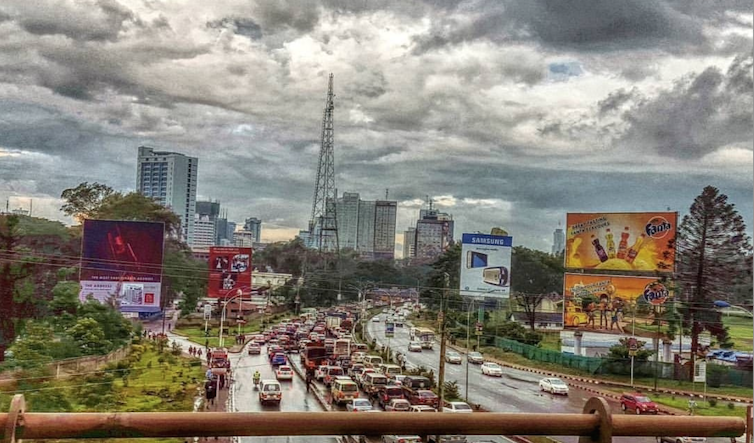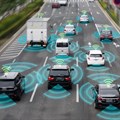Nairobi is planning car-free days. They could bring many benefits

Afternoon traffic into Nairobi’s CBD. @AmartheArkitekt/Instagram
With private cars off the road, the plan is to include more buses, a light railway and a rapid bus transit system. Though no specific date has been set for the car-free initiative, major roads leading to the city are being upgraded to facilitate the new systems. The county government says the changes on Nairobi’s roads would take six months.
All of these changes will need to be done quickly and efficiently. Given the lack of public transport infrastructure in the city, those who can’t afford a private vehicle generally commute using buses or matatus (40.6%) – privately owned minibuses which will be phased out. And those who can’t afford any form of transport generally walk (39.7%).
But the effort will be worth it. Research shows that cities benefit from car-free days in many ways. This includes traffic decongestion and reductions in time wasted, fewer car crashes and less noise and air pollution. Car free days also increase social interaction and physical activity. Overall the change will, if sustained, improve the health and well-being of the city’s residents.
Impact
The impact of going car-free goes well beyond decongesting the city.
Space that is freed up from vehicles, like roads and parking lots, could be used to create green areas – quality public spaces where people can congregate, socialise and relax. The green spaces will also reduce the heat island effect – when built-up areas are hotter than nearby rural areas – an effect known to cause premature mortality due to heart disease.
Another big health concern in developing countries’ fast-growing cities is air pollution. Car emissions account for 90% in urban areas. Car-free days are known to reduce certain types of air pollution by 20 to 78%.
Air pollution does a huge amount of damage to people’s health. Worldwide, nearly 4 million people die prematurely due to ambient air pollution, caused by industries, households, cars and trucks. And exposure to traffic related air pollution has been directly linked to increases in cases of childhood asthma and early deaths. This is particularly the case for those who spend a lot of time along highly trafficked roads – like pedestrians, motorists, traffic police and street vendors.
Car-free days are expected to reduce pollution in Nairobi where an exceptionally large amount comes from traffic. This is clear from the fact that the levels of particulate matter are 11.17 times higher on a curb in the central business district during the day than a rural background site.
Another benefit in reducing congestion is the reduction of noise pollution. Noise levels in Nairobi are approaching the healthy hearing limit. Most of the noise stems from traffic. High levels of noise aren’t just annoying or disturbing. They can also cause heart conditions and reduce cognitive functioning in children. As it is, about 640,000 Kenyans suffer from hearing problems.
Banning cars for two days could also improve Nairobi’s bad traffic safety record. There are, on average, about 7 deaths from the 35 road crashes every day. The safety effect of car-free days is hard to predict. But evidence from other cities suggests it is likely. In London for example, introducing congestion charge zone, which charged people travelling by car to the central city during peak hours, led to a reduction of 34 accidents every month.
The potential of increased safety on the roads could also make cycling a possibility on car-free days. Cycling is more affordable and healthier than motorised transport and is faster than walking. An added benefit is that studies show that cycling and walking can increase retail sales by up to 30% and that well-planned improvement to public spaces can boost footfall and trading by up to 40%. But policymakers would need to provide good and designated walking and cycling paths.
Way forward
In Rwanda, since 2016, for one day every month Kigali is a car-free zone. It has been a tremendous success and city authorities also organise exercise and wellness activities on the day. Health and eye exams, offered as part of these activities, have done well to get residents on board.
But Rwanda’s car-free days happen just once a month. Nairobi county has a much longer way to go. The best way to start will be by introducing the measures incrementally to ensure that they’re accepted. The phasing out of matatus will be particularly sensitive given that about 300,000 people are employed by the industry.
The city will need to follow a sequence of car-free days, pedestrianisation, larger car-free areas, and events to increase appeal and awareness of the new policy and its benefits.
![]() Willem van Waas, a student at Eindhoven University of Technology, assisted in the writing of this article. In his thesis, he explores how transitions towards car free cities can unfold.
Willem van Waas, a student at Eindhoven University of Technology, assisted in the writing of this article. In his thesis, he explores how transitions towards car free cities can unfold.
This article was originally published on The Conversation. Read the original article.
Source: The Conversation Africa

The Conversation Africa is an independent source of news and views from the academic and research community. Its aim is to promote better understanding of current affairs and complex issues, and allow for a better quality of public discourse and conversation.
Go to: https://theconversation.com/africaAbout Haneen Khreis and Mark Nieuwenhuijsen
Haneen Khreis, Assistant Research Scientist, Texas A&M University and Mark Nieuwenhuijsen, Research Professor at ISGlobal, Professorial Fellow, ACU, Australian Catholic UniversityRelated
From crisis to renewal: How private investment can turn South Africa’s freight challenges around 17 Feb 2025 Citrus growers urge swift action on logistics post-Sona 11 Feb 2025 Suez Canal upgrades southern sector with new navigational charts 6 Feb 2025 Profit boost predicted for 2025 despite ongoing supply chain issues 8 Jan 2025 Infrastructure takes centre stage in SA’s 2025 infrastructure priorities 6 Jan 2025 Bolt and AA host road safety training for drivers 5 Dec 2024

























